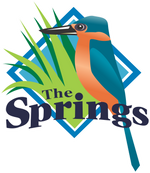Wildlife Friendly Gardens

Attract native wildlife to your garden by making your garden a 'Wildlife friendly' space. Not only will you attract bees, butterflies native animals & birds to your space but your garden will be full of extra colours and textures, and assist in pest control by attracting insect predators.
So what steps can you take to provide a friendly space for Australian Wildlife in your very own backyard, well it's a simple as...
FOOD - WATER - SHELTER
When creating your wildlife friendly garden plant native flowering plants, mainly red, yellow, orange, pink and purple blossoms and make sure there's something flowering all year round. Use your vegetation to create different layers for shade & shelter. Other features of a good wildlife garden include:
- dense or prickly shrubs provide protection for small birds
- nectar producing plants to attract insects & butterflies
- plant blue or purple flowering plants for the bees
- plant in clumps & use different shaped flowers
- provide a food source for caterpillars such as a local daisy species
Add other elements in your garden such as:
- provide water in the form of a bird bath for birds and a lower pond or pool of water for other animals
- place rocks or other elements in the water as a place for animals to rest while drinking
- create a sunny spot with a rock surface for lizards
- provide a place for butterflies to rest with some flat stones and a shallow dish with wets sand for puddling
- mature trees with hollows for nesting or install nesting boxes
- mulched areas for worms and beetle habitat
Other things to consider when making your yard a wildlife friendly space:
- avoid using poisonous pesticides in the garden to make sure it is a safe food source for birds and small animals
- keep pets (cats & dogs) secure especially at night so they don't prey on native animals
PLANT LIST


PLANTING FOR KOALAS
Eucalyptus trees are the koalas main source of food, though they may not be appropriate for suburban backyards if you live on an acreage property or farm consider planting some Eucalyptus.
 Ashley, suggests that the trees be planted in groups and if possible, close to existing native plant corridors, or nature reserves.
Ashley, suggests that the trees be planted in groups and if possible, close to existing native plant corridors, or nature reserves.Wild populations of Koalas have only a few eucalypt species as their main food source and will eat up to a kilo of leaves per day. So it is important to research what these are in your area and not to leave them out when planting.
The Springs Has The Largest Range of Natives
Our Nursery has the largest collection of Australian Native plants in Toowoomba with many of these a source of food and pollen for our Native Birds, Bees and Butterflies, along with providing habitats for our indigenous animals. Come in to see our range and talk with one of our gardening experts!
We hope you found this article useful, and happy planting. If you have any questions feel free to give us a call or come in store.

